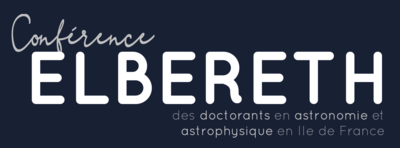Orateur
Description
Examining the rotational dynamics of an object can offer clues about the nature and properties of its interior. Our knowledge of Venus' internal structure is currently limited, in particular for its core whose size still lacks meaningful constraints, and whose state (liquid or solid) is unknown.
The variations of orientation of a planet are usually modeled as a rotation about a spin axis, which can move with respect to the fixed celestial sphere (precession + nutation) and can also move with respect to the surface itself (polar motion). The precession motion of the spin axis of Venus has recently been measured for the first time albeit with an uncertainty too large to help constrain interior models, and its polar motion has yet to be measured.
Several exploration missions to Venus are planned for the next decade, and the EnVision orbiter (ESA) will use its radar to image the surface with a resolution of tens of meters over a few years. Here, we develop a model of Venus’ precession and polar motions by taking into account last estimation of its moments of inertia (triaxial body), orientation measurements and orbital perturbations.
The analysis of this rotational dynamic will contribute to refining models of the planet's internal properties ; such knowledge is necessary to improve our understanding of the history of Venus as a whole system.
| Astrophysics Field | Planetology (including small bodies and exoplanets) |
|---|

